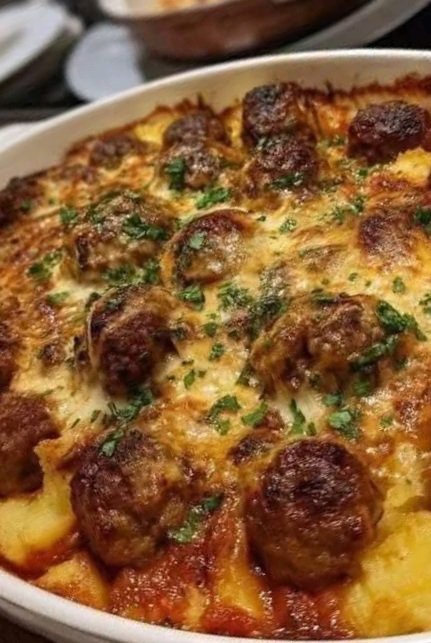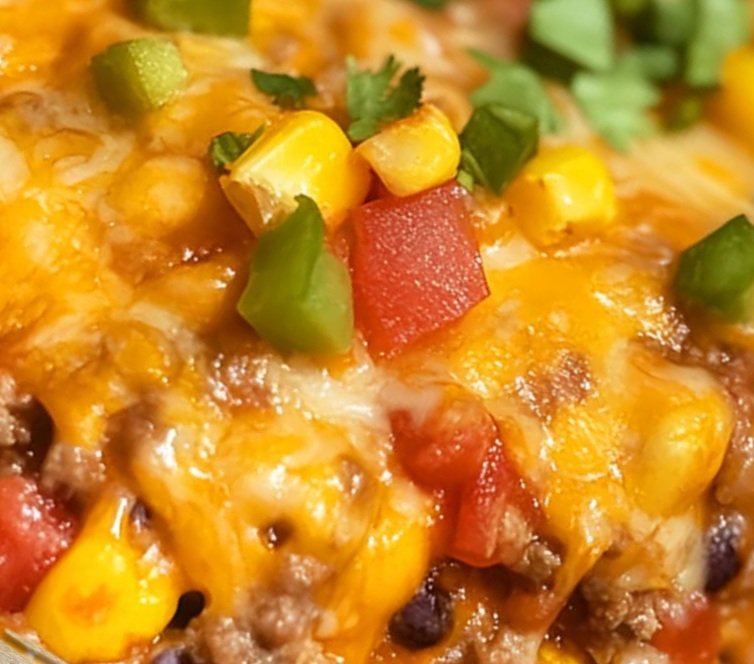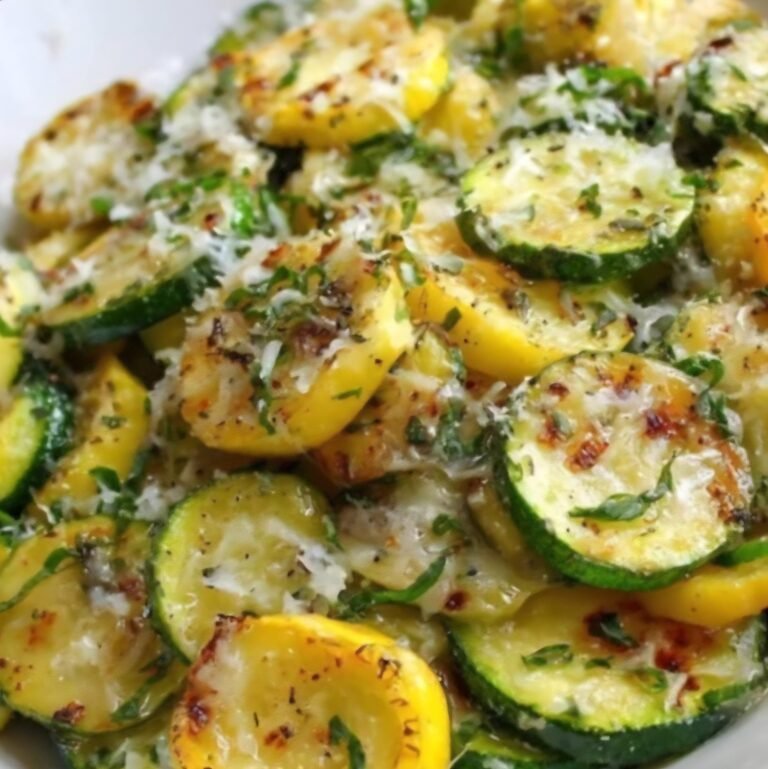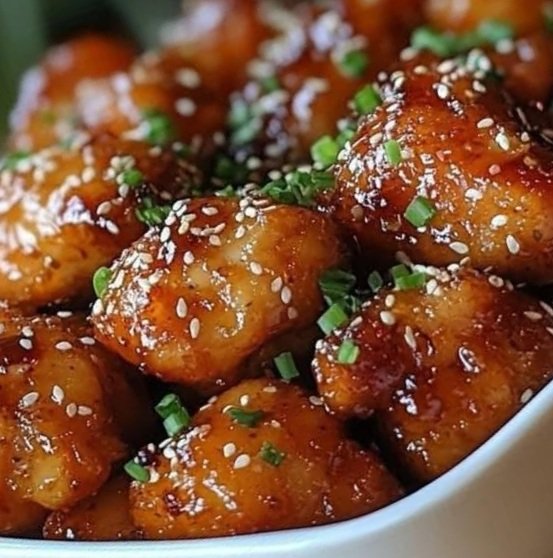Cast-Iron Seared Ribeye Steak: A Steakhouse Classic at Home

Savor the unparalleled flavor of a Cast-Iron Seared Ribeye Steak, where a perfectly caramelized crust meets a juicy, tender interior. This recipe harnesses the power of a screaming-hot cast-iron skillet to deliver steakhouse-quality results in your own kitchen. Infused with the aromatic richness of garlic, fresh herbs, and butter, this ribeye is a celebration of simple ingredients elevated through technique. Ideal for a romantic dinner, a weekend indulgence, or impressing guests, this dish is both approachable and luxurious. Pair it with roasted vegetables, creamy mashed potatoes, or a fresh salad for a meal that’s as memorable as it is delicious.
Prep Time: 5 minutes (plus 30–45 minutes for steak to come to room temperature)
Cook Time: 8–10 minutes
Total Time: About 45 minutes (including resting)
Servings: 1–2 (depending on steak size)
Difficulty: Medium
Ingredients
- 1 thick-cut ribeye steak (1.25–1.5 inches thick, about 12–16 oz, bone-in or boneless)
- Kosher salt, to taste (approximately 1–2 tsp for generous seasoning)
- Freshly ground black pepper, to taste (about 1 tsp for bold flavor)
- 1–2 tbsp high smoke-point oil (avocado, canola, or grapeseed oil recommended)
- 2 cloves garlic, lightly smashed to release aromatic oils
- 2 sprigs fresh thyme or rosemary (or a mix for layered flavor)
- 2 tbsp unsalted butter, for basting and richness
Equipment Needed
- Cast-iron skillet (10–12 inches for optimal heat retention)
- Tongs for safe handling
- Instant-read meat thermometer (optional but recommended for precision)
- Metal spoon for basting
- Cutting board for resting and slicing
- Aluminum foil (for resting)
Instructions
- Prepare the Ribeye
Remove the ribeye steak from the refrigerator 30–45 minutes before cooking to bring it to room temperature. This step ensures even cooking and a tender texture. Pat the steak dry with paper towels to remove surface moisture, which is essential for achieving a crisp, golden crust. Season both sides liberally with kosher salt and freshly ground black pepper, gently pressing the seasonings into the meat to adhere. The salt will enhance the beef’s natural flavors and help form that coveted crust. - Preheat the Cast-Iron Skillet
Place a cast-iron skillet on the stove over high heat and let it heat for 5–7 minutes until it’s extremely hot and begins to smoke lightly. A well-preheated skillet is the key to a deep, flavorful sear. Add 1–2 tablespoons of high smoke-point oil (such as avocado or canola) and swirl to coat the pan evenly. The oil should shimmer and show faint wisps of smoke, indicating it’s ready for the steak. - Sear the Steak
Carefully place the ribeye in the skillet, laying it away from you to prevent oil splatter. Gently press the steak with tongs to ensure full contact with the pan’s surface. Sear undisturbed for 2–3 minutes, allowing a rich, dark crust to form through the Maillard reaction, which creates complex, savory flavors. Flip the steak and sear the other side for another 2–3 minutes for a medium-rare doneness. Adjust searing time slightly for your preferred doneness (see doneness guide below). - Baste with Aromatics
Lower the heat to medium-high and add the unsalted butter, smashed garlic cloves, and fresh thyme or rosemary sprigs to the skillet. As the butter melts and foams, tilt the pan slightly to pool the liquid, then use a spoon to drizzle the butter, garlic, and herb mixture over the steak repeatedly for 1–2 minutes. This basting technique infuses the ribeye with nutty, aromatic flavors. For medium-rare, cook until the internal temperature reaches 130–135°F (54–57°C), checked with a meat thermometer. Remove the steak slightly before your target temperature, as it will continue cooking during resting. - Rest the Steak
Transfer the ribeye to a cutting board and loosely cover it with aluminum foil. Let it rest for 5–10 minutes to allow the juices to redistribute, ensuring a moist and flavorful bite. While the steak rests, reserve the pan juices (butter, garlic, and herbs) in a small bowl for serving. - Slice and Serve
Slice the steak against the grain into 1/2-inch strips for maximum tenderness, or serve it whole for a striking presentation. Drizzle the reserved pan juices over the steak for an extra layer of flavor. Garnish with a pinch of flaky sea salt or fresh chopped parsley for a restaurant-style finish. Serve immediately with your favorite sides.
Steak Doneness Guide (Internal Temperatures)
- Rare: 120–125°F (49–52°C)
- Medium-Rare: 130–135°F (54–57°C)
- Medium: 140–145°F (60–63°C)
- Medium-Well: 150–155°F (66–68°C)
- Well-Done: 160°F (71°C) and above
Note: Remove the steak from the skillet 5°F below your desired doneness, as residual heat will continue cooking it during resting.
Suggested Side Dishes
Complete your steak dinner with these complementary sides, designed to balance the richness of the ribeye:
- Garlic Butter Roasted Potatoes
- Ingredients: 1 lb baby potatoes (halved), 2 tbsp olive oil, 2 tbsp butter (melted), 2 cloves garlic (minced), 1 tsp dried rosemary, salt, pepper.
- Instructions: Preheat oven to 400°F (200°C). Toss potatoes with olive oil, melted butter, garlic, rosemary, salt, and pepper. Spread on a baking sheet and roast for 25–30 minutes, flipping halfway, until golden and crispy.
- Why it Works: The crispy potatoes soak up the steak’s juices, while garlic and rosemary echo the flavors in the basting butter.
- Sautéed Green Beans with Almonds
- Ingredients: 1 lb green beans (trimmed), 2 tbsp butter, 1/4 cup sliced almonds, 1 clove garlic (minced), salt, pepper.
- Instructions: Blanch green beans in boiling water for 3 minutes, then plunge into ice water to stop cooking. In a skillet, melt butter over medium heat, add almonds and garlic, and sauté until fragrant (1–2 minutes). Add green beans, season with salt and pepper, and cook for 3–4 minutes until tender-crisp.
- Why it Works: The crunchy beans and nutty almonds provide a fresh, textural contrast to the rich steak.
- Other Great Sides:
- Creamy Mashed Potatoes: Whip potatoes with butter, cream, and a touch of garlic for a comforting classic.
- Arugula Salad: Toss arugula with shaved Parmesan, lemon juice, and olive oil for a peppery, bright side.
- Grilled Asparagus: Char asparagus with olive oil and lemon zest for a vibrant, smoky addition.
Tips for Success
- Selecting the Perfect Ribeye: Choose a well-marbled ribeye with visible fat streaks for maximum flavor and juiciness. A thickness of 1.25–1.5 inches allows for a good crust without overcooking the center.
- Cast-Iron Maintenance: Preheat the skillet gradually to prevent warping, and ensure it’s well-seasoned for a non-stick surface. After cooking, clean with hot water and a brush, then dry and lightly oil to preserve the seasoning.
- Managing Smoke: Searing produces smoke, so use a kitchen exhaust fan or open a window. If smoke is excessive, lower the heat slightly after the initial sear.
- Storing Leftovers: Wrap leftover steak tightly in plastic wrap or store in an airtight container in the refrigerator for up to 3 days. Reheat gently in a 250°F oven or skillet to avoid drying out.
- Alternative Cooking Surfaces: If a cast-iron skillet isn’t available, a heavy-bottomed stainless steel pan can work, though cast-iron’s heat retention is unmatched for searing.
Why You’ll Love This Recipe
This cast-iron seared ribeye steak recipe is a masterclass in simplicity and flavor. The cast-iron skillet creates a crust that’s crispy and deeply savory, while the butter-basting with garlic and herbs adds a luxurious touch. It’s quick enough for a weeknight yet impressive enough for special occasions. Plus, the flexibility to pair it with a variety of sides makes it endlessly versatile. Whether you’re a seasoned cook or a beginner, this recipe empowers you to create a restaurant-worthy steak at home.
A Timeless Technique
The cast-iron skillet is a kitchen workhorse, revered for its ability to retain and distribute heat evenly. Searing a ribeye in cast-iron is a technique rooted in tradition, reminiscent of classic steakhouses where quality beef and precise cooking reign supreme. This recipe brings that heritage to your table, proving that with a few ingredients and a hot pan, you can create a meal that’s nothing short of extraordinary.





